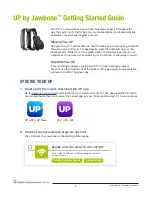
31
Storage:
• Remove the batteries from the unit if you are not going to use it for a longer
period. Leaking batteries can damage the unit.
• Do not make any sharp kinks in the connecting leads or electrodes.
• Detach the connecting cable from the electrodes.
• After use, stick the electrodes onto the backing film.
• Store the device in a cool, well-ventilated place.
• Never place any heavy objects on the device.
9. Disposal
Notes on handling batteries
• If your skin or eyes come into contact with battery fluid, flush out the af-
fected areas with water and seek medical assistance.
• Choking hazard! Small children may swallow and choke on batteries.
Store the batteries out of the reach of small children.
• Observe the plus (+) and minus (-) polarity signs.
• If a battery has leaked, put on protective gloves and clean the battery
compartment with a dry cloth.
• Protect the batteries from excessive heat.
•
Risk of explosion! Never throw batteries into a fire.
• Do not charge or short-circuit batteries.
• If the device is not to be used for a long period, take the batteries out of
the battery compartment.
• Use identical or equivalent battery types only.
• Always replace all batteries at the same time.
• Do not use rechargeable batteries.
• Do not disassemble, split or crush the batteries.
Battery disposal
• The empty, completely flat batteries must be disposed of through spe-
cially designated collection boxes, recycling points or electronics retailers.
You are legally required to dispose of the batteries.
• The codes below are printed on batteries containing harmful substances:
Pb = Battery contains lead,
Cd = Battery contains cadmium,
Hg = Battery contains mercury.
General disposal
For environmental reasons, do not dispose of the device in the household
waste at the end of its useful life. Dispose of the unit at a suitable local
collection or recycling point. Dispose of the device in accordance
with EC Directive – WEEE (Waste Electrical and Electronic
Equipment). If you have any questions, please contact the local
authorities responsible for waste disposal.
10. Problems and solutions
The device does not switch on when the ON/OFF button is pressed.
What should I do?
(1) Make sure that the batteries have been inserted correctly and have
contact.
(2) Change the batteries if necessary.
(3) Contact customer service.
The electrodes are detaching themselves from the body. What should I do?
(1) Clean the adhesive surface of the electrodes with a damp, lint-free cloth.
Then let them dry in the air and attach them again. Should the electrodes
still not adhere firmly, they must be replaced.
(2) Before each application, clean the skin, avoiding using any skin cream or
oils before treatment. Shaving can increase adhesion of the electrodes.
The device is giving out abnormal signal tones during treatment. What
should I do?
(1) Look at the display. Is any channel flashing?
Interrupt the programme
by pressing the ON/OFF button. Make sure that the connecting leads
are properly connected to the electrodes. Make sure that there is a firm
contact between the electrodes and the treatment area.
(2) Make sure that the plug of the connecting lead is firmly connected to the
device.
(3) If the signal tones do not stop and the channel is flashing, change the
connecting cable.
(4) The display shows a flashing battery signal. Renew the batteries.
There is no noticeable stimulation. What should I do?
(1) If a warning signal sounds, go through the steps described above.
(2) Press the ON/OFF key to start the programme again.
Содержание EM 80
Страница 179: ...179 ...
















































